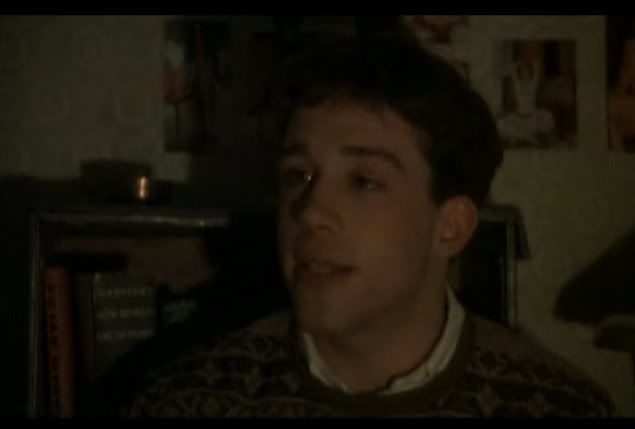knapplc
Nebraska is a Volleyball school
I ran across this little project on the internet the other day, and today I built a scale model of the solar system to show my daughter. It was actually pretty neat.
I just so happen to have an 8-inch fish bowl, which I keep a bunch of old baseballs in. In this scale model, the sun is an 8-inch ball. So that was my sun.
I gathered together a mustard seed (for Mercury), a small peppercorn and a large peppercorn (for Venus and Earth), a pin with a round head (for Mars), a large chestnut (for Jupiter), an acorn (for Saturn), a regular-sized marble (for Uranus), a coffee bean (for Neptune) and a celery seed (for Pluto).
Then I went out to the old abandoned Army Air Corps base near the airport and set it all up. I set the sun (the fishbowl) down on the end of this flat, long street. Then I walked nine paces and put down the mustard seed. Nine paces is, to scale, the distance between the mustard seed Mercury and the 8-inch sun. Another ten paces for Venus, another nine for Earth, and another dozen for Mars. Then it was 95 paces to Jupiter and 100-something to Saturn. Then the REAL distance began.
It's over 200 paces from Saturn to Uranus, another 200+ to Neptune, and another 200+ to Pluto. Pluto is this tiny, tiny, tiny thing, this ridiculously small celery seed over 3,000 feet from the sun, which is eight inches in diameter, in that scale.
It was pretty neat to see how small the planets are in comparison to the sun. It was pretty neat seeing the distances for the four inner planets - less than half a block separates the pinhead Mars from the fishbowl sun, with peppercorn Earth still kinda visible from that far away.
But when you get out there to the outer gas giants and you see just how small they really are in scale with that size sun, and you see how crazy the distance is, and realize that between them all is just... nothing, you realize just how big our solar system really is.
And then you realize how teeny-tiny our solar system is in comparison to this arm of the Milky Way, and you realize just how tiny the Milky Way is compared to the Local Group of about 30 galaxies we live in, then you realize how small that is compared to the known Universe, and you get an idea just how crazy vast space is.
My daughter was impressed with it all. She enjoyed running ahead of me to find out where I'd made the mark for the next planet. But after about Saturn, she started getting tired - it's about half a mile from the Sun to Neptune in that scale.
It's a fun experiment. If you have a place with about 3,000 feet to work with, I highly recommend doing it. It really puts things into perspective.
I just so happen to have an 8-inch fish bowl, which I keep a bunch of old baseballs in. In this scale model, the sun is an 8-inch ball. So that was my sun.
I gathered together a mustard seed (for Mercury), a small peppercorn and a large peppercorn (for Venus and Earth), a pin with a round head (for Mars), a large chestnut (for Jupiter), an acorn (for Saturn), a regular-sized marble (for Uranus), a coffee bean (for Neptune) and a celery seed (for Pluto).
Then I went out to the old abandoned Army Air Corps base near the airport and set it all up. I set the sun (the fishbowl) down on the end of this flat, long street. Then I walked nine paces and put down the mustard seed. Nine paces is, to scale, the distance between the mustard seed Mercury and the 8-inch sun. Another ten paces for Venus, another nine for Earth, and another dozen for Mars. Then it was 95 paces to Jupiter and 100-something to Saturn. Then the REAL distance began.
It's over 200 paces from Saturn to Uranus, another 200+ to Neptune, and another 200+ to Pluto. Pluto is this tiny, tiny, tiny thing, this ridiculously small celery seed over 3,000 feet from the sun, which is eight inches in diameter, in that scale.
It was pretty neat to see how small the planets are in comparison to the sun. It was pretty neat seeing the distances for the four inner planets - less than half a block separates the pinhead Mars from the fishbowl sun, with peppercorn Earth still kinda visible from that far away.
But when you get out there to the outer gas giants and you see just how small they really are in scale with that size sun, and you see how crazy the distance is, and realize that between them all is just... nothing, you realize just how big our solar system really is.
And then you realize how teeny-tiny our solar system is in comparison to this arm of the Milky Way, and you realize just how tiny the Milky Way is compared to the Local Group of about 30 galaxies we live in, then you realize how small that is compared to the known Universe, and you get an idea just how crazy vast space is.
My daughter was impressed with it all. She enjoyed running ahead of me to find out where I'd made the mark for the next planet. But after about Saturn, she started getting tired - it's about half a mile from the Sun to Neptune in that scale.
It's a fun experiment. If you have a place with about 3,000 feet to work with, I highly recommend doing it. It really puts things into perspective.





